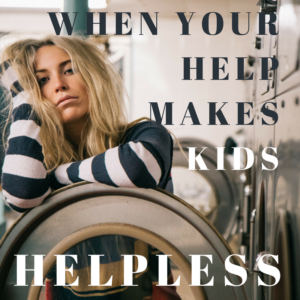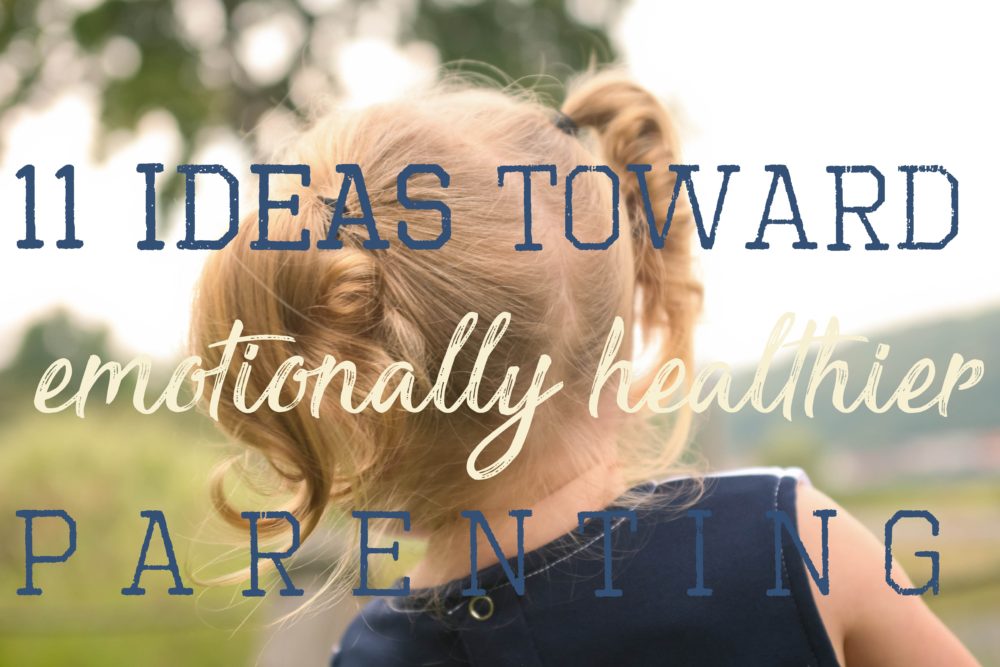
5. Gratitude.
- Consider developing a special signal to remind kids to say thanks in all manner of situations: to their teacher when leaving Sunday school, to the person cleaning the restrooms at the mall (“thanks for your work!”), to the cashier at Target, the waitress at a restaurant, and when someone picks them up from an event.
- Part of the gratitude trick is training our kids eyes (and ours!) to see kindnesses and services received—which happens all. The. Time. We’re working against our natural bent toward entitlement. Towards programming our brains to be givers rather than takers. (What would happen if a kid could quietly thank a teacher when leaving a classroom? Would they be as prone to disrespect, or teacher-bashing in the hall?) Here are a few practical ideas. You know I love Kristen Welch’s Raising Grateful Kids in an Entitled World. I’ll stop here, because I could go on for, well. A lot longer than I’m entitled to.
- Gratitude is the replacement for whining! Though you’ll find more ideas in this targeted article, one of the keys: Have a zero-tolerance whining policy. Never, ever give your child something if they whine for it. (I’ve been known to go so far that I have whining kids stop and think of three things they’re thankful for.)
- Continue with the practice of thank-you notes! The freebies page has a free printable version for younger kids.
6. Respect of authority. This one is still so daily for me with our kiddos. Perhaps the first step is identifying that American culture demands very little of kids in this area. (Our country was actually founded on some degree of…rebellion.) Personally, I like to dial it back a couple of decades in the expectations department: Having my boys remove their hats when they walk in a building; offering a seat to a woman or someone older; opening doors and carrying heavy stuff (I’m still of the old-school mindset that chivalry rocks in a man).
- Start with acknowledgment of any request. Even when my kids disagree, I ask them to begin with “Yes, Mom,” and then present their argument respectfully.
- I’m a bit of an interruption Nazi…but not interrupting anyone helps with respect, partially because it reinforces listening rather than our own agenda.
- Pastor and author Gary Thomas writes that kids are learning how to obey God from how they obey us. So when we teach our kids to respect God’s order, we’re teaching them how to respond to God. As parents, we have to courageously, consistently choose to enforce high standards for how our kids will respond to us. We’re not dominating them. But we are empowering them with the gift that is respectful obedience. I wrote previously author and pastor Danny Silk’s words on “powerful people”:
they are able to consciously and deliberately create the environment in which they want to live…They deliberately set the standard for how they expect to be treated by the way they treat others. As they consistently act in responsible, respectful, and loving ways, it becomes clear that the only people who can get close to them are those who know how to show respect, be responsible, and love well.*
7. Poise. Other ways to say it: Composure. Class. And even—self-control. This is tough, because we don’t want to drive the childhood goofiness and carefree bliss out of our kids. But there’s also something breathtaking about a child who can respond with grace to any social situation: Being insulted, for example. Or frustrated. Or made to wait. Or receiving an unwanted gift.
So perhaps poise could also be described as graciousness—speaking only “as fits the occasion, that it may give grace to those who hear” (Ephesians 4:29) It’s an ability to thrive in social situations, responding with maturity, confidence, and an eye to others. As for what it’s not: obnoxious. Ungrateful. Fearful. Obviously, teaching this takes time, a gentle touch, and a wide variety of circumstances. Ideas:
- Public speaking. Help your child to prepare for opportunities to speak at school, with increasing audiences. Our homeschooling co-op chose to capitalize on public speaking (you can print the rubric we created here, for free—and useful in classroom settings, too).
- Develop a quiet symbol with your kids for gentle manners reminders. Some kids will only be more flustered or self-conscious (leading to social dread), so this needs to be done with class on the parents’ part, too.
- As I stated in the last post, consider walking with your kids through “scripts” of certain situations ahead of time. Before we go to an event, we generally prime our kids, asking questions about what kind of behavior will be expected. We also run through specific scenarios. (“Okay. Pretend I just gave you a gift of the most hideous sweater you’ve ever witnessed. What can you say? Go!”) For my son with ADHD, we actually laminated a card of coping mechanisms, for him to keep in his pocket—for when he felt out of control. (You can download it free here, though I haven’t had time to redesign it to make it look all cute…and it’s geared for an elementary-aged boy.)
- Our great weakness as a family lies in emotional self-control—so we’re working on it continually. (We’ve chosen to attach it to screen time.)
- When your kids don’t handle a social situation with poise, consider having a private conversation with them after the fact (if it’s not such a blunder that they need to be removed immediately). Talk about ideas to handle situations differently in the future, and how any reparations might be made. It’s important to do this with grace, so kids don’t get socially freaked out and associate social interactions with failure. They’re learning, and high expectations don’t mean demands as much as helping our kids’ hearts to understand the need to love well in every situation.
- Keeping my own cool, I’ve learned, is key. Rather than entering so much into their emotion that I’m not steady, I can keep my voice at a steady, gentle tone when my child is starting to melt down. (Whispering in their ear helps, to minimize public shame and more fear.) See more tips here on tackling kid drama without squashing their emotions.
*Silk, Danny. Keep Your Love On: Connection, Communication, and Boundaries. (2015)
Like this post? You might like












![Now You're Speaking My [Love] Language Now You're Speaking My [Love] Language](https://www.janelbreitenstein.com/wp-content/uploads/2015/08/love-languages-text-1.jpg)





Leave a Reply